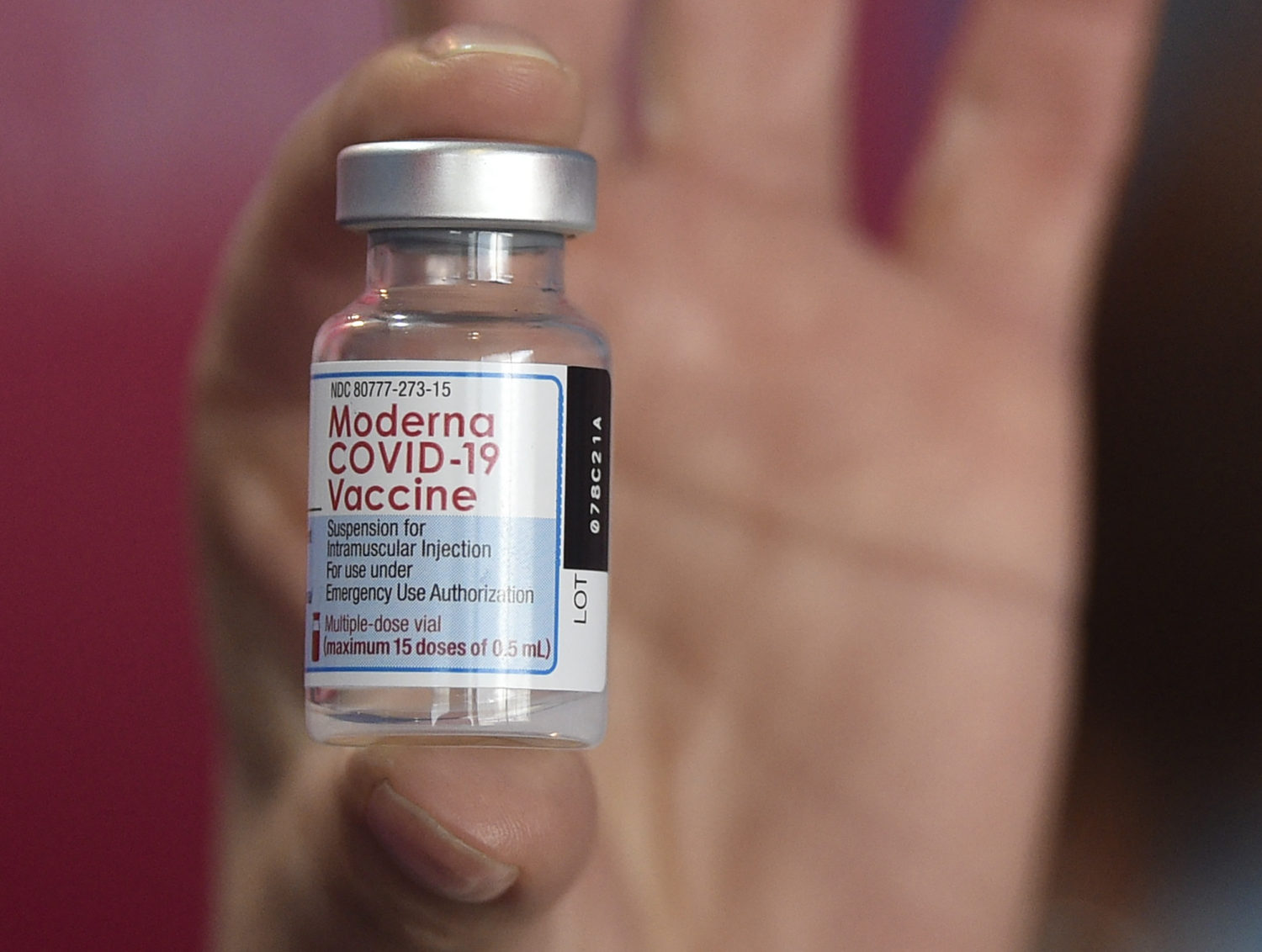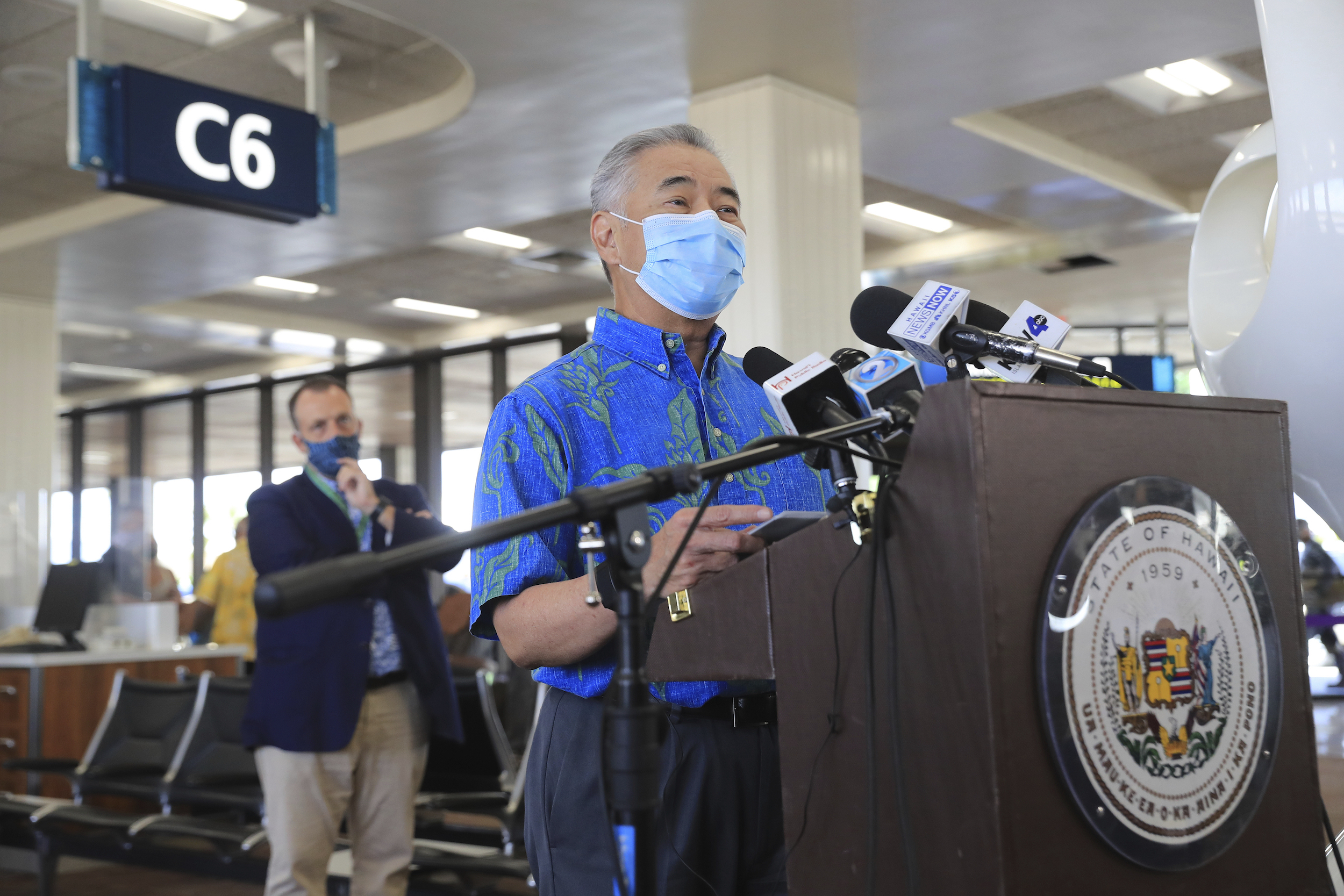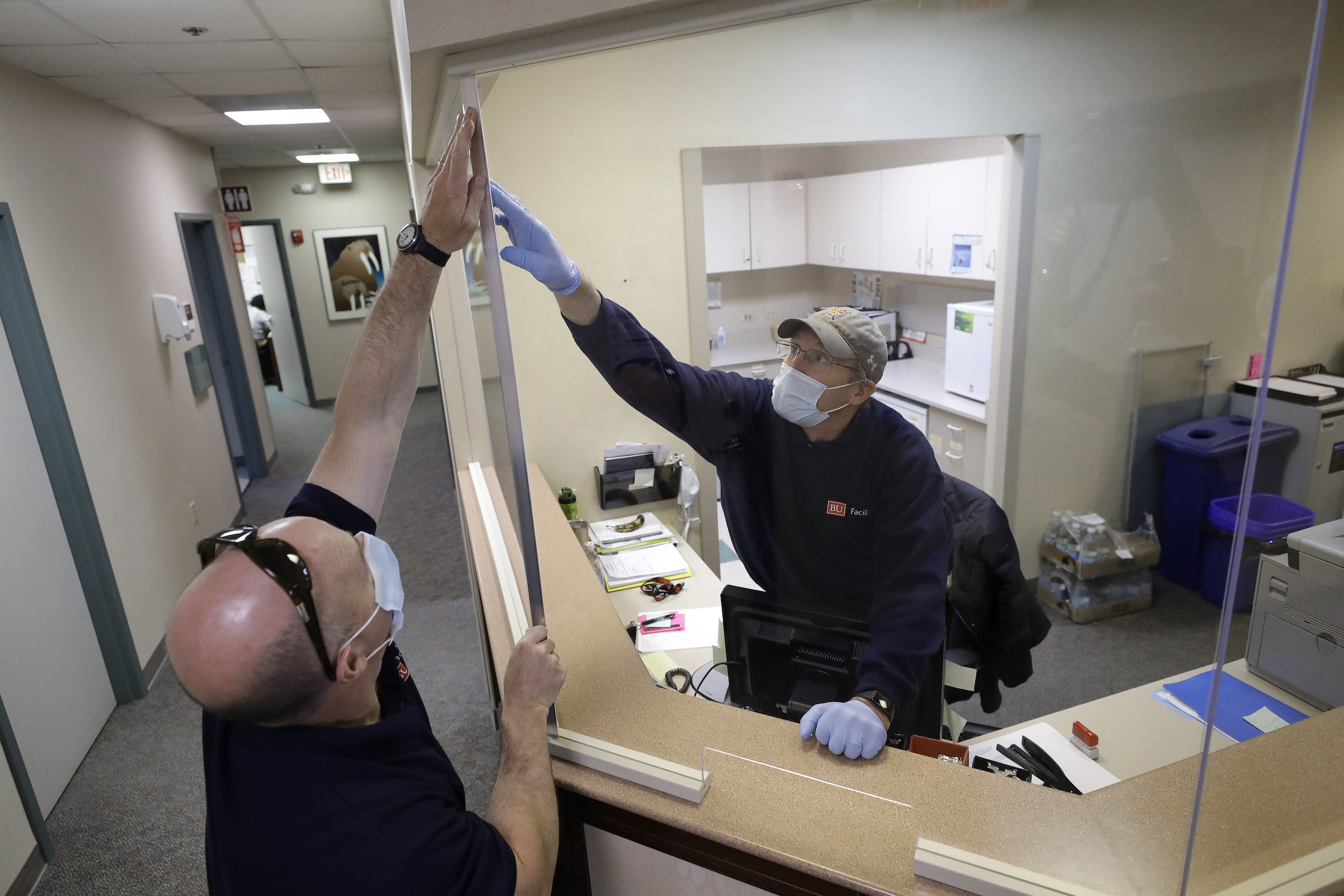


Covering COVID-19 is a daily Poynter briefing of story ideas about the coronavirus and other timely topics for journalists, written by senior faculty Al Tompkins. Sign up here to have it delivered to your inbox every weekday morning.
There is no single list that every employer or business will accept to exempt a person from a vaccine mandate, but there are some more I want to cite. Philadelphia Inquirer reporter Tom Avril wrote a bang-up piece on this issue that I used as a launchpad for this item.
Here are some conditions and scenarios that people or health care professionals commonly cite when seeking a medical exemption:
PEG allergies: Polyethylene glycol is a substance contained in both the Moderna and Pfizer vaccines. It can touch off an allergic reaction for a small number of people. PEG is used in a wide range of pharmaceutical products as a contrast agent to make images show up on ultrasounds and such. You heard about that allergy early in the vaccine program. It is why you have to hang around for a while after you get your vaccine — to be sure you do not have a reaction.
If you can prove you are one of the tiny number of people who have this allergy, it is your ticket to vaccine exemption even though lots of people who have the allergy do just fine with the shots. The allergic reactions are generally so mild that one study found that 159 of 189 patients who had a reaction went back for a second dose and only 32 of them had any mild reaction at all the second time around.
There could be a reason they had no trouble. Forbes reports that PEGs may have had nothing to do with the reactions:
“Around 5 in a million people experience what appears to be a severe allergic reaction to the Covid-19 vaccines,” said David Stukus, MD, a Professor of Pediatrics in the Division of Allergy and Immunology at Nationwide Children’s Hospital in Columbus, Ohio. “We initially thought that individuals with allergy to vaccine ingredients called polyethylene glycol, or polysorbate may have been those experiencing reactions because there are virtually no other components of the mRNA vaccines or Johnson & Johnson that are really identified as causes of allergic reaction. But after investigation, these don’t appear to be the cause of this very rare anaphylaxis,” added Stukus.
Multisystem inflammatory syndrome: MIS is, again, rare. It is usually found in children. The Centers for Disease Control and Prevention says, “Multisystem inflammatory syndrome in children (MIS-C) is a condition where different body parts can become inflamed, including the heart, lungs, kidneys, brain, skin, eyes, or gastrointestinal organs. We do not yet know what causes MIS-C. However, we know that many children with MIS-C had the virus that causes COVID-19, or had been around someone with COVID-19. MIS-C can be serious, even deadly, but most children who were diagnosed with this condition have gotten better with medical care.”
Cancer: There has been some confusion over this exemption because the vaccine may not produce much of an immune response in patients in cancer treatment. Doctors are telling their cancer patients to take the vaccine but to be very careful because even vaccinated, they will not be as protected as other people. Forbes reports:
“There are no specific contraindications for people with cancer, although in some cases, patients might not mount an effective immune response,” said Dr Benjamin G. Neel, M.D., Ph.D. Professor of Medicine at NYU School of Medicine and Director of the Laura and Isaac Perlmutter Cancer Center.
“We strongly recommend that all of our cancer patients get the vaccine, although some patients, particularly those with blood cancers, might not develop a strong immune response to two doses of the vaccine and could benefit from a third dose,” added Neel.
Cancer patients will be high on the list for the first booster shots.
Phobia of needles: Trypanophobia probably won’t qualify someone for a medical exemption, even though a surprisingly large number of people freak out over shots.
Remember, just because you do not suffer from or understand another person’s phobia does not make it less real for that person. The American Psychological Association has some help for needle-phobic folks who are holding off getting the shots. And, the APA says, “One meta-analysis found that 8% of health care workers in hospitals and 18% of workers in long-term care facilities avoid the influenza vaccine due to needle fears.”
Teens who fear heart inflammation: This condition shows up “very rarely” but has been cited as a concern that some teens and their parents have. The CDC says the risk of getting severely ill from COVID-19 far outweighs the risk.
In short, while you may be able to find a doctor who will write you an exemption for some condition or another, there are very few people who legitimately qualify based on clinical evidence presented so far.

A sign etched into a harvested wheat field welcoming students back to Washington State University is shown near Pullman, Wash. WSU requires proof of the COVID‑19 vaccination for the 2021–2022 academic year for all students taking part in classes or other activities on campus, with exemptions allowed for medical, religious or personal reasons. (AP Photo/Ted S. Warren)
People who do not want to take the shots may try to get a religious exemption, but they will find that most major faith groups have no such exemption. Vanderbilt University Medical Center compiled a list of what major faith groups say about vaccines. The list says:
When we began this year, the Food and Drug Administration estimated that our COVID-19 vaccines were 90% effective. But we took too long to get vaccinated and, now that the virus has had time to find ways around the vaccines, the shots are about 65% effective. As vaccines go, that is not awful, but we have missed the chance we once had to end the pandemic. And the vaccines are still very effective at keeping you out of the hospital.
This stark assessment is contained in a new, deep study published by the CDC. The study ran 35 weeks and involved more than 4,100 people from Dec. 14, 2020 through Aug. 14, 2021. The researchers opened the door that longer studies may alter the results. The patients in this study were all “health care personnel, first responders, and other essential and frontline workers” who receive weekly tests in Miami, Florida; Duluth, Minnesota; Portland, Oregon; Temple, Texas; Salt Lake City, Utah; and Phoenix and Tucson, Arizona.
The researchers also point out that even with reduced efficacy, the vaccines work quite well at protecting you from severe illness. The vaccines just cannot protect you from milder cases of COVID-19.
We all have swallowed hard more than once in the last year and a half when we got sobering news about how long the pandemic would in all probability be with us. Dr. Anthony Fauci says if we step up and get vaccinated, we might get back to our pre-pandemic way of life in spring 2022. Yes, it will be another long winter, it seems.
One of the seldom-discussed doors that opened this week when the FDA gave full approval to Pfizer’s COVID-19 vaccine is that it means physicians can prescribe the vaccines “off-label,” meaning they could prescribe them to children under age 12.
Glad you asked. Once the FDA approves a drug as safe and effective, health care providers can prescribe that medication or treatment even for a person or condition the drug is not approved for.
They would usually do so because an approved treatment does not work for the patient, or there is no approved treatment for what the patient is suffering. So they turn to an approved drug for an unapproved use. In this case, it could be possible for a doctor to use a COVID-19 vaccine to vaccinate a younger child.
The American Academy of Pediatrics jumped right in and said it hopes doctors won’t do that. I want you to see what the AAP told its members:
“The clinical trials for the COVID-19 vaccine in children ages 11 years old and younger are underway, and we need to see the data from those studies before we give this vaccine to younger children,” said AAP President Lee Savio Beers, MD, FAAP. “The dose may be different for younger ages. The AAP recommends against giving the vaccine to children under 12 until authorized by the FDA.”
While the FDA is considering full approval of the vaccine for ages 12 through 15, it is available under emergency use authorization for this age group now, and AAP strongly recommends all eligible adolescents be vaccinated as soon as possible. The data from clinical trials and experience with the vaccine over the past four months in these adolescents show that it is safe and very effective in this age group, said Dr. Beers.
The dose of the adult vaccine is much higher than the doses being tested in children younger than 12.
Yvonne Maldonado, MD, FAAP, chair of the AAP Committee on Infectious Diseases, urged physicians to wait until the clinical trials are complete in children to give the vaccine to those under 12.
“We do not want individual physicians to be calculating doses and dosing schedules one-by-one for younger children based on the experience with the vaccine in older patients,” Dr. Maldonado said. “We should do this based on all of the evidence for each age group, and for that we need the trials to be completed. I know parents are anxious to protect their children, but we want to make sure children have the full benefit of ongoing clinical trials.”
NBC News reports it will still be at least a few weeks before children under age 12 get FDA approval for any vaccines:
Pfizer CEO Albert Bourla told NBC that the company is running “very large studies right now” with children under 12. He said it expected that studies on children ages 5 to 11 would be completed in September and that the company could then submit the data to the FDA.
Pfizer expects data on toddlers up to age 4 soon afterward, NBC News has reported. Moderna’s timeline for data on children is likely to be in late fall or early winter.
The FDA has asked for four to six months of follow-up safety data from the children’s clinical trials — compared to two months’ follow-up data required for the adult vaccine trials.

With Hawaii Lt. Gov Josh Green, left, in the background, Hawaii Gov. David Ige speaks at a press conference at the Daniel K. Inouye International Airport Thursday, Oct. 15, 2020, in Honolulu. (AP Photo/Marco Garcia)
Can you imagine a governor of a state whose entire economy relies on tourism telling tourists to stay away? That’s what happened in Hawaii, where Gov. David Ige said, “It’s not a good time to travel to the islands. The visitors who choose to come to the island will not have the typical kind of holiday that they expect to get when they visit Hawaii.”
The mayor of Honolulu announced new restrictions:
#Covid19 cases are up dramatically, and our healthcare workers are being pushed beyond their limits. Beginning August 25, we will be suspending all large gatherings for 4 weeks. This includes trade shows, conventions, concerts and other live events.
— Mayor Rick Blangiardi (@MayorRickHNL) August 23, 2021
Starting Aug. 25, indoor gatherings of more than 10 people and outdoor gatherings of more than 25 in Oahu are prohibited. The Honolulu Star-Advertiser reports:
“Most” new cases are the result of residents traveling off-island and coming back home to spread COVID-19 in the community, Ige said.
“I’m asking all residents and visitors alike to restrict travel, curtail travel, to Hawaii to essential activities only.”
Asked about the possibility of another statewide shutdown, which crippled the visitor industry in 2020 and led to the highest unemployment rate and worst economy in the nation, Ige said:
“Another shutdown is really the last resort.”
My friend Pat Dooris, a reporter at KGW in Portland, Oregon, kept asking to get into a jam-packed local hospital to tell the story of the patients who are filling the COVID-19 wards and the doctors and nurses who are beyond stressed. He finally got in and wrote to me, “I’m passing along a story we did this past week to encourage other journalists across the country to push for access to ICUs and docs fighting COVID. I think a lot, including management, are ready to talk about what’s happening.”
Pat heard from the caregivers who are exhausted and understandably angry that they must try to save lives that should not have been in peril.
Pat explains that hospitals have heard about patients who have died because they had to put off so-called “elective surgeries” because hospitals were full. Often, those “elective” surgeries and treatments are not as optional as they might sound.
Also over the weekend, The New York Times Opion team produced an insightful video from inside an ICU. Their story was captured in Mountain Home, Arkansas. The ICU there is full and half of the hospital staff is unvaccinated.
Bloomberg reports that potentially millions of instant COVID-19 tests may be showing both positive and negative results but the outcomes are not part of the data we are looking at to help understand the spread of the pandemic.

Carpenters John Mackie, of Canton, Mass., left, and Doug Hathaway, of Holliston, Mass., right, apply trim to a newly installed plastic barrier in an office area, at Boston University, in Boston, on May 20, 2020. (AP Photo/Steven Senne)
Just as we did a year ago when COVID-19 cases were increasing and it seemed we should do more, businesses are erecting plastic barriers between customers or between customers and workers. Evidence is emerging that such barriers may be good theater, but do not help much to keep people safe from the virus. The New York Times found:
Research suggests that in some instances, a barrier protecting a clerk behind a checkout counter may redirect the germs to another worker or customer. Rows of clear plastic shields, like those you might find in a nail salon or classroom, can also impede normal air flow and ventilation.
Under normal conditions in stores, classrooms and offices, exhaled breath particles disperse, carried by air currents and, depending on the ventilation system, are replaced by fresh air roughly every 15 to 30 minutes. But erecting plastic barriers can change air flow in a room, disrupt normal ventilation and create “dead zones,” where viral aerosol particles can build up and become highly concentrated.
We’ll be back tomorrow with a new edition of Covering COVID-19. Are you subscribed? Sign up here to get it delivered right to your inbox.
Support high-integrity, independent journalism that serves democracy. Make a gift to Poynter today. The Poynter Institute is a nonpartisan, nonprofit organization, and your gift helps us make good journalism better.

Al Tompkins is one of America's most requested broadcast journalism and multimedia teachers and coaches. After nearly 30 years working as a reporter, photojournalist, producer,…